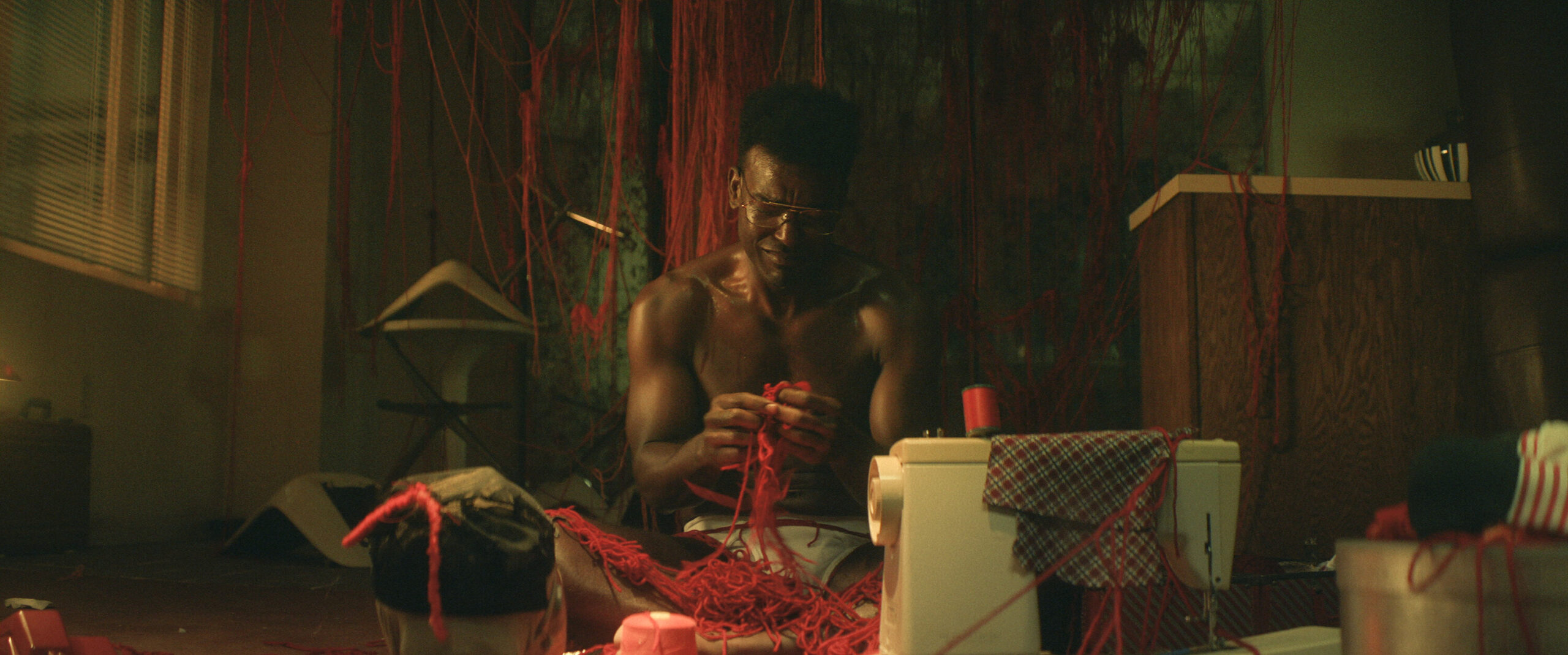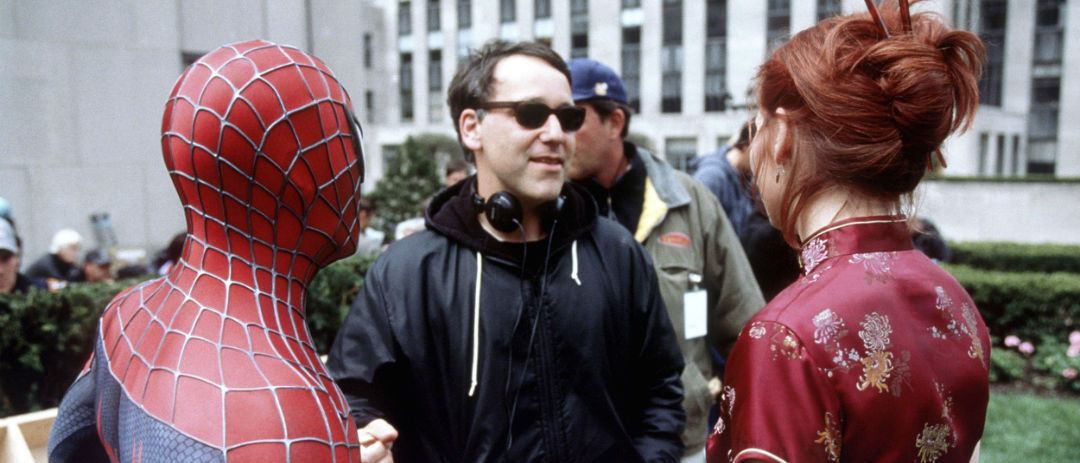From the start, the bemused murmurs were faintly heard throughout the theater when the character posters were introduced to the walls. On one, Oprah Winfrey stood in a costume more appropriate for EDC attire; above her, her name towered in bulging font, dwarfing the size of the title, like a well-known author taking up half the cover of their latest publication.
Beneath, read A Wrinkle In Time.
The trailers didn’t do the film any favors either; some spots focused on how hard the production team worked to bring Madeleine L’Engle’s beloved children’s book to life, always a bad sign for an upcoming film.
“We tried our hardest, appreciate our work” is never the tagline you want to hear in terms of a blockbuster’s promo. Preceded by a smattering of pre-screenings that didn’t elicit much response, the film was released to tepid reviews and little audience enthusiasm.
Now that the film has been resigned to digital, Disney is counting their losses, projecting a negative return close to $86 million.
Does A Wrinkle In Time deserve the ire of grumpy critics and the indifference of audiences? I really don’t think so.
Similar to other notorious Disney bomb John Carter (which has since developed its own cult following), A Wrinkle in Time is a misunderstood, timely family flick that inspires more good than inflicts harm.
A Good, Honest Message For The Kids
In a time where children look to silicon-induced social media personalities as their inspiration, A Wrinkle In Time denounces the dangers of perceiving Instagram as reality, giving young people a realistic hero to root for in Meg — a bi-racial, mostly “meh” student, who suffers from self-esteem issues, but is determined to follow her parents footsteps in becoming a physicist. At one point, when she encounters the villain IT (not to be confused with Pennywise the Clown from Stephen King’s IT), she is given the choice to embody a perfect version of herself: attractive, popular, intelligent. Instead, she accepts the gifts of her faults, embracing her imperfections and confessing that she hates herself, which is okay; she chooses love over negativity.
The movie paints differing realities for various and relatable characters: Meg struggles without the influence of a father figure, unable to adjust to the now splintered family; a bully is haunted by an eating disorder and body dysmorphia; a boy is mentally abused by his perfectionist father.
Meg’s dad comes back, which is all well and good, but there’s no definitive solution to tackle these problems in real life. Instead, the film emphasizes the dangers of social conformity and emphasizes the importance of truth, which seems to bring resolution to encroaching despair.
What other Disney movie shows such a stark reality of the tribulations inside the mind of a teenage girl?
A (Mostly) Faithful Adaptation
I recently re-read the book to see how far the film strayed from the source material. Despite its Wizard of Oz undertones, the beloved children’s classic is a jumbled mess of scenes; when I was a kid reading this thing, I can see why the part where the children are bouncing the balls in unison was the only thing that stuck with me. But back then, the rest went right over my head, like the kids were hurling their balls at me and nearly striking me in the noggin.
It’s still an enjoyable read, with thematic elements that appease adults and subconsciously influence younger readers. However, it moves from one part to the next with reckless abandon, leaving little time for a reader to get acclimated to any particular setting. Adapting L’Engle’s work is no easy task, as seen from Disney’s abhorrent take on the material in 2003. Director Ava Duverney’s comes pretty close, ditching the Christian themes and focusing more on the threads that bind a family, regardless of the interstellar distance.
The biggest absence is the creatures at the book’s end, which make a brief appearance at the movie’s mid-point; while Zach Galifianakis is telling Meg to clear her mind, an assortment of extraterrestrial terrain zips through her thoughts. In one, Galifianakis greets an Aunt Beast – a reference to the tentacle aliens that resuscitate Meg following her battle with IT.
It took advancements in visual effects and the right creative team to faithfully adapt A Wrinkle In Time.
The film version does an admirable job sticking to the source material, in terms of following overall, major plot points.
Not A Bad Soundtrack
Anyone that had a young daughter or little sister in the 2000’s will recall car rides scored to some horrendous movie soundtracks. Confessions of a Teenage Drama Queen, The Lizzie McGuire Movie, and She’s The Man immediately come to my mind with a shudder.
A Wrinkle In Time takes a page out of the Black Panther soundtrack: release a record with original songs that could easily become hits across digital music platforms. Also, credit to the producers for introducing elusive singer Sade to younger listeners. Her tune “Flower of the Universe” could receive some attention come award season.
Addressing The Criticism
Critics skewered the film following its release, souring the Rotten Tomatoes score to a rotten 39% approval rating. Most sneered at its vast ambition and laughable characters.
The negativity prompted actress Brie Larson to savage publications:
“I don’t need a 40-year-old white dude to tell me what didn’t work about A Wrinkle in Time,” said Larson during the Crystal and Lucy Awards. “It wasn’t made for him. I want to know what it meant to women of color, biracial women, to teen women of color.”
The criticism is valid; she urges more diversity in the field so more female critics can speak out on a movie featuring a biracial teenage girl.
The film did score a victory: Duverney led A Wrinkle In Time to become the first $100 million-plus budgeted live-action film directed by an African-American woman, but will still lose money because of Disney’s expensive marketing machine.
However, There Are Still Flaws
That’s not to say that the movie is a masterpiece – far from it. Like a plethora of live-action fare geared towards kids, some parts are plain laughable for adults:
Meg’s fashionista little brother gleefully caresses Oprah’s giant cheek while riding atop a wavy lettuce leaf is the most hysterically dopey part of the movie, even without the influence of mind-altering substances. The character Charlie spends most of his time gaping in a wide-eyed haze, suggesting this might all be some lucid dream he’s experiencing after consuming some tainted beef the night before. The costumes and makeup of the Missus definitely should have gone through some creative drafts before being initiated into production.
Faults aside, it definitely doesn’t deserve the meager 4.2 score on IMDb (a total lower than Congo, Crocodile Dundee In Los Angeles, and Jason X).
You could do worse than let your kids watch this. The morals are there, the Yes-album inspired visuals are dazzling, and the last half-hour of the film hammers a message of family unity and self-worth that few flicks hold a candle to.
Don’t forget to share this post on your Facebook wall and with your Twitter followers! Just hit the buttons on the top of this page.

 FOR FANBOYS, BY FANBOYS
Have you checked out LRM Online’s official podcasts and videos on The Genreverse Podcast Network? Available on YouTube and all your favorite podcast apps, This multimedia empire includes The Daily CoG, Breaking Geek Radio: The Podcast, GeekScholars Movie News, Anime-Versal Review Podcast, and our Star Wars dedicated podcast The Cantina. Check it out by listening on all your favorite podcast apps, or watching on YouTube!
Subscribe on: Apple Podcasts | Spotify | SoundCloud | Stitcher | Google Play
FOR FANBOYS, BY FANBOYS
Have you checked out LRM Online’s official podcasts and videos on The Genreverse Podcast Network? Available on YouTube and all your favorite podcast apps, This multimedia empire includes The Daily CoG, Breaking Geek Radio: The Podcast, GeekScholars Movie News, Anime-Versal Review Podcast, and our Star Wars dedicated podcast The Cantina. Check it out by listening on all your favorite podcast apps, or watching on YouTube!
Subscribe on: Apple Podcasts | Spotify | SoundCloud | Stitcher | Google Play








